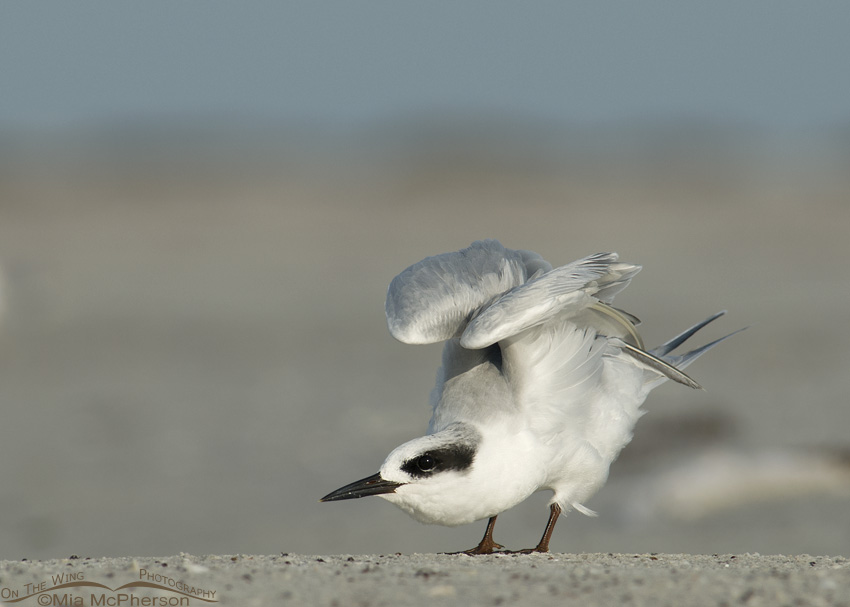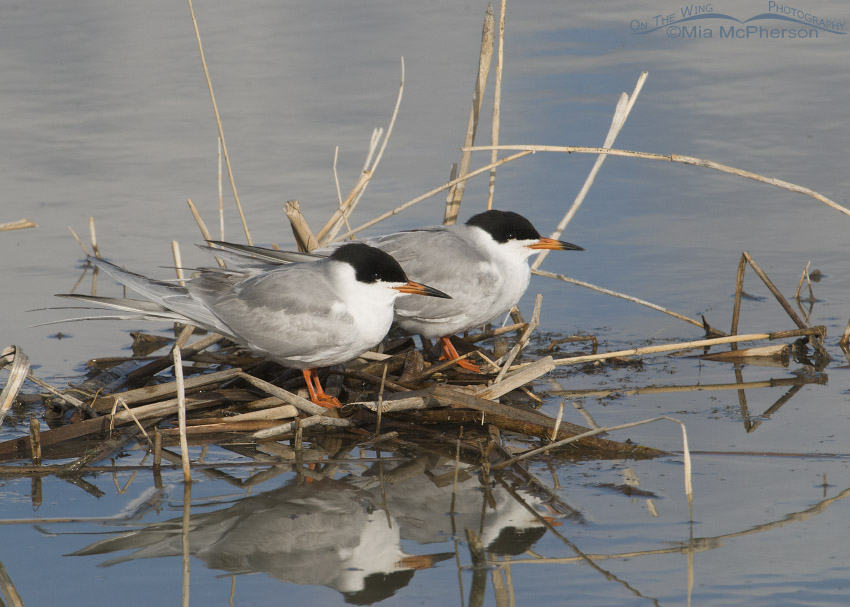 Forster’s Tern wing lift – Nikon D200, handheld, f7.1, 1/800, ISO 160, Nikkor 80-400mm VR at 400mm, natural light
Forster’s Tern wing lift – Nikon D200, handheld, f7.1, 1/800, ISO 160, Nikkor 80-400mm VR at 400mm, natural light
One of the neat things about having lived in Florida before I moved back out west to Utah is that I have been able to photograph quite a few species of birds in both locations. Some of the species I photographed in Florida overwinter there and breed here in northern Utah or pass through here on migration.
I used to photograph Forster’s Terns on the beaches of Fort De Soto County Park during their nonbreeding season along the Gulf of Mexico. The Forster’s Terns would dive and capture small fish in the waves there and rest on the sugar sand beaches.
During the nonbreeding season Forster’s Terns have black bills, dark legs and dark masks with pale napes, the dark spot almost looks like a comma.
I photographed this Forster’s Tern stretching its wings at the north beach of Fort De Soto in late August of 2008 so this bird had already left its breeding grounds and returned to its wintering grounds.
 Forster’s Tern mated pair on nest – Nikon D200, f11, 1/750, ISO 400, -0.3 EV, Nikkor 200-400mm VR with 1.4x TC at 400mm, natural light
Forster’s Tern mated pair on nest – Nikon D200, f11, 1/750, ISO 400, -0.3 EV, Nikkor 200-400mm VR with 1.4x TC at 400mm, natural light
During the breeding season the bills of Forster’s Terns turn orange near the base of their bills and have black tips which look very different from their appearance when not in breeding plumage. Their dark legs turn orange and their mask becomes a full black cap.
I photographed this mated pair of Forster’s Terns on their nest from the Bear River Migratory Bird Refuge auto tour route at the end of May in 2010. The terns were still in the process of building the nest and I saw them bringing in nesting materials, there weren’t any eggs in the nest at the time. I wasn’t able to follow this nesting pair of terns that breeding season because that summer the dirt road out to the auto tour route was paved and the road didn’t open back up until much later in the year.
A few facts on Forster’s Terns:
- Forster’s Terns are migratory although it is the only tern found in North America throughout the year.
- During the breeding season their preferred habit includes marshes with lots of open water and islands with vegetation.
- Forster’s Terns eat fish and small arthropods.
- Forster’s Terns lay 1 to 6 eggs which hatch in 23 to 25 days. Both sexes incubate and they are monogamous.
The differences in breeding and nonbreeding plumage of Forster’s Terns is enough that some bird watching and bird photography novices might even think that they are two different species of terns.
Life is good.
Mia
Click here to see more of my Forster’s Tern photos plus facts and information about this species.


Two good comparison images particularly like the non breeding pose Mia, very nice.
Very beautiful images. Nice to know they can be seen in northern Utah too.
And I think I did once or twice, flying over the water in the park off Forest St.
I would have definitely thought they were different species…a very dramatic change in appearance! MIGHT have thought prebreeding birds sere juveniles, but diubt it. Thanks for the education…
I appreciate this morning lesson on tern breeding behavior, natural history and ID all in one – and yesterday’s for that matter. While Royal and Caspian would be rare this far north in New England, Common, Least, Roseate, Forster’s occasionally and Arctic, rarely show up on our beaches and we have a colony of Black Terns on Lake Champlain. Hard to tell them all apart! Happy spring birding Mia, thanks for sharing.
Beautiful images, MiA